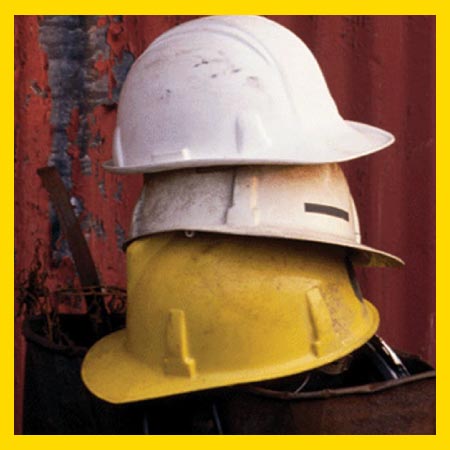Currency
January 31, 2022

Many OHS pros believe that going beyond OSHA requirements demonstrates the use of best practices. Going beyond OSHA, however, requires careful considerations.
Are employers required to maintain a written safety checklist for each forklift prior to its operation? OSHA’s Powered industrial trucks standard at 1910.178(q)(7) requires powered industrial trucks to be examined before being placed in service. In support of this requirement, OSHA, in conjunction with the Industrial Truck Association, provide online “Sample Daily Checklists for Powered Industrial Trucks” (1). Automating forklift inspections, such as use of the MasterCheck app (2), are growing in popularity and add performance analytics for daily forklift inspections.

Given the above, it appears that employers are required to maintain a written safety checklist for each forklift prior to its operation. OSHA’s standard interpretation on the topic, however, states “Although the standard requires that the examination be conducted, there is no OSHA requirement that the examination be recorded in writing on a checklist.” (3)
Are “No Smoking” signs required in an area where a forklift battery is being charged? For reference, OSHA’s Powered industrial trucks standard at 1910.178(g)(10) requires that “Smoking shall be prohibited in the charging area.” The standard does not mention signs. OSHA has not published a standard interpretation on the topic at this time. We must make our own interpretation. Posting a sign appears to be the most expedient way to demonstrate to OSHA that smoking is prohibited in the charging area. The majority of workplaces in the U.S., however, are smoke free based upon public health laws. Is written documentation of daily forklift inspections beyond an OSHA requirement or posting “No Smoking” signs in areas where they are not required, examples of best practices?
The above are just a couple examples among thousands of situations where OSHA minimal requirements are expanded into seemingly best practices. Let us consider a more complex case.
OSHA’s occupational noise standard at 1910.95(c)(1) states, “The employer shall administer a continuing, effective hearing conservation program, as described in paragraphs (c) through (o) of this section, whenever employee noise exposures equal or exceed an 8-hour time-weighted average sound level (TWA) of 85 decibels measured on the A scale (slow response) or, equivalently, a dose of fifty percent.” OSHA was asked during an interpretation inquiry, “How many days per year would an employee have to be exposed to an environment with noise levels in excess of the 85 decibels (dB) time weighted average (TWA) before he/she is required to be covered by the company's hearing conservation program (HCP)? OSHA’s interpretative response was: “One day.” (4)
Per the OSHA interpretation, “The occupational noise exposure standard requires that all employees exposed to noise levels at or above 85 dB on an 8-hour (TWA) must be included in an HCP. This includes employees who may have only occasional exposures at this level. Thus, for example, the HCP provisions would apply with respect to an engineer or other such employees who visit a facility several times a year and are exposed to TWA noise levels at or above 85 dB, even though they may not experience any other such exposures during the year. When enforcing the standard, OSHA reviews employer records and may perform personal monitoring to determine if all employees with exposures equaling or exceeding the TWA of 85 dB have been included in the HCP.”
OSHA’s noise HCP interpretation must carefully consider OSHA 1910.95 Table G-16 and G-16A (Appendix A) information. G-16 tables demonstrate that at high noise levels e.g., less than fifteen minutes at 115 dBA, and shorter times for higher decibel levels and slightly longer time as noise levels are reduced, requires an HCP. Many workplaces, particularly in manufacturing and construction, likely will experience a one-day situation where noise levels exceed those found in G-16 tables.
There are no studies that demonstrate hearing loss from a single day exposure above noise limits found in G-16 tables. Further, OSHA’s HCP interpretation is not consistent with the agency’s other health standards such as lead 1910.1025(j)(i) and silica 1910.1053(l)(4) that trigger medical surveillance when the action level is exceeded for “more than 30 days per year.” OSHA’s HCP interpretation is most likely based upon administrative convenience, rather than health protection. Is seeking out and including workers with one-time noise events into an HCP because of an OSHA interpretation a best practice?
OSHA’s 2021 standard interpretations include topics on heat inspections, enforcement response for Covid-19, coverage of lithium batteries under the HCS, and many others. For example, is use of a non-occupational asthma rescue inhaler at work due to fragrance sensitivity considered medical treatment? Read the interpretation to find out why OSHA said, “yes.”
Per OSHA, “Standard Interpretations are letters or memos written in response to public inquiries or field office inquiries regarding how some aspect of or terminology in an OSHA standard or regulation is to be interpreted and enforced by the Agency. These letters provide guidance to clarify the application of an established OSHA standard, policy, or procedure, but they may not, in themselves, establish or revise OSHA policy or procedure or interpret the OSH Act. They must specifically cite the source policy or procedure document they interpret.” Standard Interpretations may be searched by year published or by standard number. (6)
ISO 45001:2018 OHS management systems goes beyond OSHA but with the following caveat found at A.7.5 Documented information: “It is important to keep the complexity of the documented information at the minimum level possible to ensure effectiveness, efficiency, and simplicity at the same time.”
Remember, OSHA interpretations may not, in themselves, establish or revise OSHA policy or procedure or interpret the OSH Act. Interpretations do, however, add a significant layer of management complexity to complex OSHA law. All interpretations should be reviewed with the objective of how to make the OHS management system simpler but also more effective. OHS pros should place greater emphasis on intent of OSHA law, rather than details found within the letter of OSHA law.
Examples PIT standards
Are employers required to maintain a written safety checklist for each forklift prior to its operation? OSHA’s Powered industrial trucks standard at 1910.178(q)(7) requires powered industrial trucks to be examined before being placed in service. In support of this requirement, OSHA, in conjunction with the Industrial Truck Association, provide online “Sample Daily Checklists for Powered Industrial Trucks” (1). Automating forklift inspections, such as use of the MasterCheck app (2), are growing in popularity and add performance analytics for daily forklift inspections.

Given the above, it appears that employers are required to maintain a written safety checklist for each forklift prior to its operation. OSHA’s standard interpretation on the topic, however, states “Although the standard requires that the examination be conducted, there is no OSHA requirement that the examination be recorded in writing on a checklist.” (3)
Are “No Smoking” signs required in an area where a forklift battery is being charged? For reference, OSHA’s Powered industrial trucks standard at 1910.178(g)(10) requires that “Smoking shall be prohibited in the charging area.” The standard does not mention signs. OSHA has not published a standard interpretation on the topic at this time. We must make our own interpretation. Posting a sign appears to be the most expedient way to demonstrate to OSHA that smoking is prohibited in the charging area. The majority of workplaces in the U.S., however, are smoke free based upon public health laws. Is written documentation of daily forklift inspections beyond an OSHA requirement or posting “No Smoking” signs in areas where they are not required, examples of best practices?
The above are just a couple examples among thousands of situations where OSHA minimal requirements are expanded into seemingly best practices. Let us consider a more complex case.
Example Noise HCP
OSHA’s occupational noise standard at 1910.95(c)(1) states, “The employer shall administer a continuing, effective hearing conservation program, as described in paragraphs (c) through (o) of this section, whenever employee noise exposures equal or exceed an 8-hour time-weighted average sound level (TWA) of 85 decibels measured on the A scale (slow response) or, equivalently, a dose of fifty percent.” OSHA was asked during an interpretation inquiry, “How many days per year would an employee have to be exposed to an environment with noise levels in excess of the 85 decibels (dB) time weighted average (TWA) before he/she is required to be covered by the company's hearing conservation program (HCP)? OSHA’s interpretative response was: “One day.” (4)
Per the OSHA interpretation, “The occupational noise exposure standard requires that all employees exposed to noise levels at or above 85 dB on an 8-hour (TWA) must be included in an HCP. This includes employees who may have only occasional exposures at this level. Thus, for example, the HCP provisions would apply with respect to an engineer or other such employees who visit a facility several times a year and are exposed to TWA noise levels at or above 85 dB, even though they may not experience any other such exposures during the year. When enforcing the standard, OSHA reviews employer records and may perform personal monitoring to determine if all employees with exposures equaling or exceeding the TWA of 85 dB have been included in the HCP.”
OSHA’s noise HCP interpretation must carefully consider OSHA 1910.95 Table G-16 and G-16A (Appendix A) information. G-16 tables demonstrate that at high noise levels e.g., less than fifteen minutes at 115 dBA, and shorter times for higher decibel levels and slightly longer time as noise levels are reduced, requires an HCP. Many workplaces, particularly in manufacturing and construction, likely will experience a one-day situation where noise levels exceed those found in G-16 tables.
There are no studies that demonstrate hearing loss from a single day exposure above noise limits found in G-16 tables. Further, OSHA’s HCP interpretation is not consistent with the agency’s other health standards such as lead 1910.1025(j)(i) and silica 1910.1053(l)(4) that trigger medical surveillance when the action level is exceeded for “more than 30 days per year.” OSHA’s HCP interpretation is most likely based upon administrative convenience, rather than health protection. Is seeking out and including workers with one-time noise events into an HCP because of an OSHA interpretation a best practice?
Standard interpretations
OSHA’s 2021 standard interpretations include topics on heat inspections, enforcement response for Covid-19, coverage of lithium batteries under the HCS, and many others. For example, is use of a non-occupational asthma rescue inhaler at work due to fragrance sensitivity considered medical treatment? Read the interpretation to find out why OSHA said, “yes.”
Per OSHA, “Standard Interpretations are letters or memos written in response to public inquiries or field office inquiries regarding how some aspect of or terminology in an OSHA standard or regulation is to be interpreted and enforced by the Agency. These letters provide guidance to clarify the application of an established OSHA standard, policy, or procedure, but they may not, in themselves, establish or revise OSHA policy or procedure or interpret the OSH Act. They must specifically cite the source policy or procedure document they interpret.” Standard Interpretations may be searched by year published or by standard number. (6)
Minimum levels
ISO 45001:2018 OHS management systems goes beyond OSHA but with the following caveat found at A.7.5 Documented information: “It is important to keep the complexity of the documented information at the minimum level possible to ensure effectiveness, efficiency, and simplicity at the same time.”
Remember, OSHA interpretations may not, in themselves, establish or revise OSHA policy or procedure or interpret the OSH Act. Interpretations do, however, add a significant layer of management complexity to complex OSHA law. All interpretations should be reviewed with the objective of how to make the OHS management system simpler but also more effective. OHS pros should place greater emphasis on intent of OSHA law, rather than details found within the letter of OSHA law.









